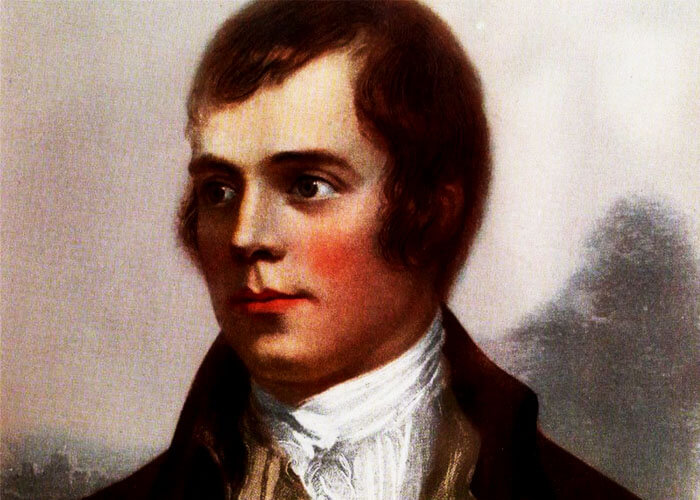Robert Burns is one of Scotland’s most beloved poets, known for his heartfelt poems and songs. But did you know there’s much more to him than just his famous works?
In this post, we’ll uncover “Ten Interesting Facts about Robert Burns” that reveal surprising details about his life and legacy. From his humble beginnings to his global influence, these facts will give you a deeper appreciation for the man behind the poetry. Whether you’re a longtime fan or new to his work, these tidbits are sure to entertain and enlighten you. Dive in and discover the fascinating world of Robert Burns.

Ten Interesting Facts about Robert Burns
A brief overview of Robert Burns and his significance:
Robert Burns, born on January 25, 1759, in Alloway, Scotland, is one of the most celebrated Scottish poets and lyricists. Known as the Bard of Ayrshire and Scotland’s national poet, his work captures the spirit of Scotland’s culture and its people. Burns’ poetry and songs cover themes of love, friendship, work, and the joys and sorrows of everyday life. His most famous works include “Auld Lang Syne,” “To a Mouse,” and “Tam o’ Shanter.” Burns’ influence extends beyond literature; his legacy is honored annually on Burns Night, a celebration of Scottish heritage.
Fact 1: Humble Beginnings
Robert Burns was born into a farming family in the small village of Alloway, Scotland. His parents, William Burnes and Agnes Broun, worked hard to make ends meet, instilling a strong work ethic in young Robert. Despite the demanding farm work, his parents valued education and ensured that Robert received a basic education.
Burns was particularly influenced by his father’s teachings and the books he read, which included Shakespeare, Milton, and the Bible. This blend of hard labor and intellectual growth profoundly shaped Burns’ worldview and poetic voice, laying the foundation for his future literary success.
Fact 2: A Poet by Necessity
Robert Burns began writing poetry as a means to cope with the challenges of farm life. The relentless toil and harsh conditions of farming were physically and emotionally taxing. Writing became a solace for Burns, allowing him to express his thoughts and feelings creatively. His early poems often reflected the struggles and joys of rural existence, capturing the essence of the Scottish countryside.
This creative outlet not only provided him with a way to endure hardships but also helped him develop his distinctive voice, blending humor, emotion, and keen social commentary, which later resonated with a broad audience.
Fact 3: The Ploughman Poet
Robert Burns earned the nickname “Ploughman Poet” because of his dual life as both a poet and a farmer. While working the land and enduring the physical demands of farming, Burns continued to write poetry that vividly depicted the life of the common people. His background as a plowman added authenticity to his work, allowing him to connect deeply with the rural Scottish experience.
The term “Ploughman Poet” highlights how Burns merged his agricultural life with his literary pursuits, illustrating how his humble origins enriched his poetry and made it relatable to many of his contemporaries.
Fact 4: “Auld Lang Syne”
“Auld Lang Syne” is one of Robert Burns’ most famous songs, often sung to celebrate New Year’s Eve. The song’s title translates to “old long since” and reflects on the value of old friendships and the passage of time. Burns wrote the lyrics in 1788 based on an earlier Scottish folk song. The song gained worldwide popularity for its nostalgic and sentimental appeal, especially during New Year’s celebrations.
Its universal message of cherishing old friends and memories has made it a timeless anthem, symbolizing reflection and renewal as people bid farewell to the old year and welcome the new.

Fact 5: Burns and the Scots Language
Robert Burns is celebrated for his extensive use of the Scots language in his poetry and songs, which significantly preserved and promoted Scottish culture. Burns embraced Scots, a language rich in regional dialects and expressions, to convey the authentic voice of the Scottish people.
His works, written in Scots, capture the nuances of everyday life, emotions, and local traditions. By using this language, Burns not only highlighted the cultural identity of Scotland but also helped revive interest in Scots, making it a cherished part of Scotland’s literary heritage. His contributions remain influential in Scottish literature and cultural pride.
Fact 6: Political Views
Robert Burns held progressive political views that influenced his poetry and social commentary. A supporter of Enlightenment ideals and social reform, Burns was critical of the class system and inequalities of his time. His poems often reflect his sympathy for the common people and his disdain for aristocracy and corruption.
Works like “The Rights of Woman” and “The Tree of Liberty” reveal his belief in individual freedom and justice. Burns’ political outlook not only shaped his literary voice but also connected him with broader social movements, making his work relevant to contemporary discussions on equality and reform.
Fact 7: Love and Relationships
Robert Burns’ romantic life was a rich source of inspiration for his poetry, reflecting his passionate and often tumultuous relationships. His love affairs with women like Jean Armour, with whom he had a long and complicated relationship, and his other romantic entanglements, deeply influenced his work.
Burns’ poems such as “My Love is Like a Red, Red Rose” and “Ae Fond Kiss” capture the depth of his feelings and experiences. His ability to convey the joys and sorrows of love with sincerity and emotional intensity contributed to his enduring popularity and the timeless appeal of his romantic verse.

Fact 8: The Burns Supper Tradition
The Burns Supper, held annually on January 25th, celebrates the life and work of Robert Burns, coinciding with his birthday. Originating in 1801, five years after Burns’ death, the tradition began as a small gathering among his friends to honor his memory. It has since evolved into a grand celebration of Scottish culture. Key customs include reciting Burns’ poetry, singing his songs, and enjoying a traditional meal featuring haggis, neeps (turnips), and tatties (potatoes).
The evening often includes toasts, speeches, and the reading of Burns’ work, creating a festive atmosphere that pays tribute to Scotland’s national poet.
Fact 9: Burns’ Global Influence
Robert Burns’ influence extends far beyond Scotland, impacting literature and culture worldwide. His poetry and songs have been translated into numerous languages, reaching diverse audiences and inspiring writers, musicians, and scholars globally.
Burns’ themes of universal human experience, social justice, and emotional depth resonate with people from various cultures. His work has influenced prominent figures in literature and music, and his celebration of Scottish culture has contributed to the global appreciation of Scottish traditions. Burns’ enduring legacy is evident in the widespread observance of Burns Night and his continued relevance in international literary and cultural discussions.
Fact 10: Monuments and Memorials
Robert Burns is commemorated by numerous monuments and memorials worldwide, reflecting his global significance. The Robert Burns Birthplace Museum in Alloway, Scotland, preserves his birthplace and features exhibits about his life and work. In Edinburgh, the Burns Monument, located in the city’s Calton Hill, stands as a tribute to the poet with a statue and inscriptions of his work.
Other notable memorials include the Burns Statue in Dumfries and the Burns Memorial in Ayr. Internationally, Burns is honored with statues and plaques in places such as Australia and the United States, highlighting his enduring legacy across continents.
FAQs:
An interesting fact about Burns Night is that it is celebrated annually on January 25th to honor Robert Burns’ birthday. The tradition began in 1801, just five years after Burns’ death when a group of his friends held a small gathering to remember him. Today, Burns Night is a grand celebration of Scottish culture, featuring traditional foods like haggis, poetry readings, and the singing of Burns’ songs. The evening often includes ceremonial toasts and recitations of his famous works, making it a lively tribute to Scotland’s national poet.
Robert Burns often referred to himself as “The Ploughman Poet.” This nickname reflects his background as a farmer and his dual identity as both a poet and a laborer. Despite his humble origins, Burns used his agricultural experiences to enrich his poetry, capturing the essence of rural Scottish life and connecting deeply with the common people through his literary works.
Robert Burns is special because of his profound impact on Scottish literature and culture. His ability to capture the spirit of Scotland through his poetry and songs, often written in Scots dialect, makes his work uniquely authentic and relatable. Burns’ themes of love, social justice, and human experience resonate universally. His celebration of Scottish traditions and his contributions to the literary world have earned him enduring recognition, with his birthday celebrated worldwide as Burns Night.
Robert Burns wrote or adapted around 370 songs during his lifetime. His contributions to Scottish folk music include both original compositions and reworkings of traditional tunes. Burns’ songs, such as “Auld Lang Syne” and “My Luve is Like a Red, Red Rose,” are celebrated for their lyrical beauty and emotional depth, cementing his legacy as a significant figure in Scottish music and poetry.
Conclusion:
In exploring the “Ten Interesting Facts about Robert Burns,” we gain a deeper appreciation for the life and legacy of Scotland’s national poet. From his humble beginnings as a farmer to his profound impact on literature and culture, Burns’ journey is a testament to his extraordinary talent and influence. His use of the Scots language, political views, and romantic experiences enriched his poetry, while his global impact and numerous monuments underscore his lasting significance.
The tradition of Burns Night, along with his prolific songwriting, highlights the enduring relevance of his work. These ten facts offer a glimpse into why Robert Burns remains a celebrated and cherished figure worldwide.




